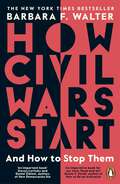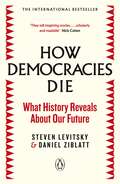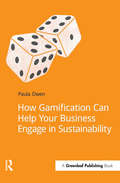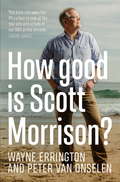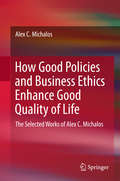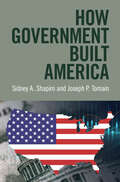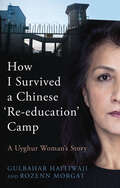- Table View
- List View
How Can You Represent Those People?: Criminal Defense Stories
by Abbe Smith Monroe H. FreedmanHow Can You Represent Those People? is the first-ever collection of essays offering a response to the 'Cocktail Party Question' asked of every criminal lawyer. A must-read for anyone interested in race, poverty, crime, punishment, and what makes lawyers tick.
How Civic Action Works: Fighting for Housing in Los Angeles (Princeton Studies in Cultural Sociology #9)
by Paul LichtermanThe ways that social advocates organize to fight unaffordable housing and homelessness in Los Angeles, illuminated by a new conceptual framework for studying collective actionHow Civic Action Works renews the tradition of inquiry into collective, social problem solving. Paul Lichterman follows grassroots activists, nonprofit organization staff, and community service volunteers in three coalitions and twelve organizations in Los Angeles as they campaign for affordable housing, develop new housing, or address homelessness. Lichterman shows that to understand how social advocates build their campaigns, craft claims, and choose goals, we need to move beyond well-established thinking about what is strategic.Lichterman presents a pragmatist-inspired sociological framework that illuminates core tasks of social problem solving, both contentious and noncontentious, by grassroots and professional advocates alike. He reveals that advocates’ distinct styles of collective action produce different understandings of what is strategic, and generate different dilemmas for advocates because each style accommodates varying social and institutional pressures. We see, too, how patterns of interaction create a cultural filter that welcomes some claims about housing problems while subordinating or delegitimating others. These cultural patterns help solve conceptual and practical puzzles, such as why coalitions fragment when members agree on many things, and what makes advocacy campaigns separate housing from homelessness or affordability from environmental sustainability. Lichterman concludes by turning this action-centered framework toward improving dialogue between social advocates and researchers.Using extensive ethnography enriched by archival evidence, How Civic Action Works explains how advocates meet the relational and rhetorical challenges of collective action.
How Civic Action Works: Fighting for Housing in Los Angeles (Princeton Studies in Cultural Sociology #9)
by Paul LichtermanThe ways that social advocates organize to fight unaffordable housing and homelessness in Los Angeles, illuminated by a new conceptual framework for studying collective actionHow Civic Action Works renews the tradition of inquiry into collective, social problem solving. Paul Lichterman follows grassroots activists, nonprofit organization staff, and community service volunteers in three coalitions and twelve organizations in Los Angeles as they campaign for affordable housing, develop new housing, or address homelessness. Lichterman shows that to understand how social advocates build their campaigns, craft claims, and choose goals, we need to move beyond well-established thinking about what is strategic.Lichterman presents a pragmatist-inspired sociological framework that illuminates core tasks of social problem solving, both contentious and noncontentious, by grassroots and professional advocates alike. He reveals that advocates’ distinct styles of collective action produce different understandings of what is strategic, and generate different dilemmas for advocates because each style accommodates varying social and institutional pressures. We see, too, how patterns of interaction create a cultural filter that welcomes some claims about housing problems while subordinating or delegitimating others. These cultural patterns help solve conceptual and practical puzzles, such as why coalitions fragment when members agree on many things, and what makes advocacy campaigns separate housing from homelessness or affordability from environmental sustainability. Lichterman concludes by turning this action-centered framework toward improving dialogue between social advocates and researchers.Using extensive ethnography enriched by archival evidence, How Civic Action Works explains how advocates meet the relational and rhetorical challenges of collective action.
How Civil Wars Start: And How to Stop Them
by Barbara F. WalterCivil wars are the biggest danger to world peace today - this book shows us why they happen, and how to avoid them.'When one of the world's leading scholars of civil war tells us that a country is on the brink of violent conflict, we should pay attention' Steven Levitsky and Daniel Ziblatt, How Democracies DieWe are now living in the world's greatest era of civil wars. While violence has declined worldwide, major civil wars are now being fought in countries Iraq, Syria and Libya as well as smaller civil wars in India and Malaysia. Even countries we thought could never experience another - such as the USA, Sweden and Ireland - are showing signs of unrest. So how can we stop them?In How Civil Wars Start, Professor Barbara F. Walter, an expert who has advised the CIA, Senate and UN, explains the rise of civil wars, the conditions that create them and a path back toward peace.*Sunday Times Smart Thinking Book of the Year 2022 & New York Times Bestseller*
How Constitutional Rights Matter
by Adam Chilton Mila VersteegDoes constitutionalizing rights improve respect for those rights in practice? Drawing on statistical analyses, survey experiments, and case studies from around the world, this book argues that enforcing constitutional rights is not easy, but that some rights are harder to repress than others. First, enshrining rights in constitutions does not automatically ensure that those rights will be respected. For rights to matter, rights violations need to be politically costly. But this is difficult to accomplish for unconnected groups of citizens. Second, some rights are easier to enforce than others, especially those with natural constituencies that can mobilize for their enforcement. This is the case for rights that are practiced by and within organizations, such as the rights to religious freedom, to unionize, and to form political parties. Because religious groups, trade unions and parties are highly organized, they are well-equipped to use the constitution to resist rights violations. As a result, these rights are systematically associated with better practices. By contrast, rights that are practiced on an individual basis, such as free speech or the prohibition of torture, often lack natural constituencies to enforce them, which makes it easier for governments to violate these rights. Third, even highly organized groups armed with the constitution may not be able to stop governments dedicated to rights-repression. When constitutional rights are enforced by dedicated organizations, they are thus best understood as speed bumps that slow down attempts at repression. An important contribution to comparative constitutional law, this book provides a comprehensive picture of the spread of constitutional rights, and their enforcement, around the world.
How Constitutional Rights Matter
by Mila Versteeg Adam ChiltonDoes constitutionalizing rights improve respect for those rights in practice? Drawing on statistical analyses, survey experiments, and case studies from around the world, this book argues that enforcing constitutional rights is not easy, but that some rights are harder to repress than others. First, enshrining rights in constitutions does not automatically ensure that those rights will be respected. For rights to matter, rights violations need to be politically costly. But this is difficult to accomplish for unconnected groups of citizens. Second, some rights are easier to enforce than others, especially those with natural constituencies that can mobilize for their enforcement. This is the case for rights that are practiced by and within organizations, such as the rights to religious freedom, to unionize, and to form political parties. Because religious groups, trade unions and parties are highly organized, they are well-equipped to use the constitution to resist rights violations. As a result, these rights are systematically associated with better practices. By contrast, rights that are practiced on an individual basis, such as free speech or the prohibition of torture, often lack natural constituencies to enforce them, which makes it easier for governments to violate these rights. Third, even highly organized groups armed with the constitution may not be able to stop governments dedicated to rights-repression. When constitutional rights are enforced by dedicated organizations, they are thus best understood as speed bumps that slow down attempts at repression. An important contribution to comparative constitutional law, this book provides a comprehensive picture of the spread of constitutional rights, and their enforcement, around the world.
How Constitutions Change: A Comparative Study
by Dawn Oliver Carlo FusaroThis set of essays explores how constitutions change and are changed in a number of countries, and how the 'constitution' of the EU changes and is changed. For a range of reasons, including internal and external pressures, the constitutional arrangements in many countries are changing. Constitutional change may be formal, involving amendments to the texts of Constitutions or the passage of legislation of a clearly constitutional kind, or informal and organic, as where court decisions affect the operation of the system of government, or where new administrative and other arrangements (eg agencification) affect or articulate or alter the operation of the constitution of the country, without the need to resort to formal change.The countries in this study include, from the EU, a common law country, a Nordic one, a former communist state, several civil law systems, parliamentary systems and a hybrid one (France). Chapters on non EU countries include two on developing countries (India and South Africa), two on common law countries without entrenched written constitutions (Israel and New Zealand), a presidential system (the USA) and three federal ones (Switzerland, the USA and Canada). In the last two chapters the editors conduct a detailed comparative analysis of the jurisdiction-based chapters and explore the question whether any overarching theory or theories about constitutional change in liberal democracies emerge from the study.
How Constitutions Change: A Comparative Study
by Dawn Oliver Carlo FusaroThis set of essays explores how constitutions change and are changed in a number of countries, and how the 'constitution' of the EU changes and is changed. For a range of reasons, including internal and external pressures, the constitutional arrangements in many countries are changing. Constitutional change may be formal, involving amendments to the texts of Constitutions or the passage of legislation of a clearly constitutional kind, or informal and organic, as where court decisions affect the operation of the system of government, or where new administrative and other arrangements (eg agencification) affect or articulate or alter the operation of the constitution of the country, without the need to resort to formal change.The countries in this study include, from the EU, a common law country, a Nordic one, a former communist state, several civil law systems, parliamentary systems and a hybrid one (France). Chapters on non EU countries include two on developing countries (India and South Africa), two on common law countries without entrenched written constitutions (Israel and New Zealand), a presidential system (the USA) and three federal ones (Switzerland, the USA and Canada). In the last two chapters the editors conduct a detailed comparative analysis of the jurisdiction-based chapters and explore the question whether any overarching theory or theories about constitutional change in liberal democracies emerge from the study.
How Democracies Die: What History Reveals About Our Future
by Daniel Ziblatt Steven LevitskyTwo Harvard professors explain the dangerous world we face todayDemocracies can die with a coup d'état - or they can die slowly. This happens most deceptively when in piecemeal fashion, with the election of an authoritarian leader, the abuse of governmental power and the complete repression of opposition. All three steps are being taken around the world - not least with the election of Donald Trump - and we must all understand how we can stop them.In How Democracies Die, Harvard professors Steven Levitsky and Daniel Ziblatt draw insightful lessons from across history - from the rule of General Augusto Pinochet in Chile to the quiet undermining of Turkey's constitutional system by President Recip Erdogan - to shine a light on regime breakdown across the twentieth and twenty-first centuries. Notably they point to the dangers of an authoritarian leader faced with a major crisis. Based on years of research, they present a deep understanding of how and why democracies die; an alarming analysis of how democracy is being subverted today in the US and beyond; and a guide for maintaining and repairing a threatened democracy, for governments, political parties and individuals. History doesn't repeat itself. But we can protect our democracy by learning its lessons, before it's too late.
How Doctors Think: Clinical Judgment and the Practice of Medicine
by Kathryn MongtomeryHow Doctors Think defines the nature and importance of clinical judgment. Although physicians make use of science, this book argues that medicine is not itself a science but rather an interpretive practice that relies on clinical reasoning. A physician looks at the patient's history along with the presenting physical signs and symptoms and juxtaposes these with clinical experience and empirical studies to construct a tentative account of the illness. How Doctors Think is divided into four parts. Part one introduces the concept of medicine as a practice rather than a science; part two discusses the idea of causation; part three delves into the process of forming clinical judgment; and part four considers clinical judgment within the uncertain nature of medicine itself. In How Doctors Think, Montgomery contends that assuming medicine is strictly a science can have adverse side effects, and suggests reducing these by recognizing the vital role of clinical judgment. "This is a book that will be read with pleasure by anyone interested in how medicine is done and it is a book that should be required reading for all students starting their clinical training."--Journal of the Royal Society of Medicine "Montgomery has certainly written a piece that will stimulate people to think more deeply about medical and wider health professional practice. It is a text I will recommend to students and colleagues."--PsycCRITIQUES
How Doctors Think: Clinical Judgment and the Practice of Medicine
by Kathryn MongtomeryHow Doctors Think defines the nature and importance of clinical judgment. Although physicians make use of science, this book argues that medicine is not itself a science but rather an interpretive practice that relies on clinical reasoning. A physician looks at the patient's history along with the presenting physical signs and symptoms and juxtaposes these with clinical experience and empirical studies to construct a tentative account of the illness. How Doctors Think is divided into four parts. Part one introduces the concept of medicine as a practice rather than a science; part two discusses the idea of causation; part three delves into the process of forming clinical judgment; and part four considers clinical judgment within the uncertain nature of medicine itself. In How Doctors Think, Montgomery contends that assuming medicine is strictly a science can have adverse side effects, and suggests reducing these by recognizing the vital role of clinical judgment. "This is a book that will be read with pleasure by anyone interested in how medicine is done and it is a book that should be required reading for all students starting their clinical training."--Journal of the Royal Society of Medicine "Montgomery has certainly written a piece that will stimulate people to think more deeply about medical and wider health professional practice. It is a text I will recommend to students and colleagues."--PsycCRITIQUES
How Fixed Is a Permanent Establishment? (Series on International Taxation #42)
by Jean SchaffnerPermanent establishment is the key concept for allocating taxation rights in respect of business income, and the question ‘Is there a permanent establishment?’ is a tax treaty issue that advisers, government officials, and courts perennially confront. Based on a ‘fixed link to the ground’, the idea has become progressively more difficult to apply until, at this stage, re-evaluation has become a political necessity. If a permanent establishment may exist in the context of e-commerce, the concept of a geographical presence must be redefined. However, the question remains: Is e-commerce a sufficient reason for challenging the well-established permanent establishment nexus? Drawing on case law, administrative practice, and business decisions in numerous jurisdictions, the author discusses the permanent establishment criteria under conditions of e-commerce and the service economy. He shows that the OECD Model Convention and its commentaries already offer the basis for the evolution of the analysis of the concept, and that the preservation of permanent establishment protects and maintains the level playing field between capital importing and capital exporting economies. He examines in depth such elements as the following: ;the prevalence of commercial coherence over geographic coherence; the role of value-added tax; services permanent establishment; relevant definitions of ‘activity’ and ‘personnel’; multiple permanent establishments; supervision activity and sub-contracting; the differences between civil law and common law concepts of representation; particular treatment of the insurance sector; the ‘force of attraction’ concept; and specific exceptions (e.g., transportation, artists and sportsmen, rental income, agricultural activities, pipelines). Taking into account important distinctions between two model conventions (OECD and UN), as well as pertinent EU directives and the impact of EU law, the author proposes minor amendments to the OECD Model that adapt it to economic reality and current trends in jurisprudence and that can be implemented immediately. An appendix includes Article 5 and its commentaries as they have evolved since 1963, with the successive addenda and deletions. The author’s 20-plus years of experience as a tax lawyer lend the presentation a thoroughly practical aspect. The work addresses in more detail than any other publication the topic of profit allocation to a permanent establishment in the e-commerce world, an issue which is evolving rapidly in the current economic environment. Tax advisors, lawyers, and interested academics and policymakers will benefit from the book’s clear analysis of the conditions under which a permanent establishment not only should be preserved, but also how it is likely to be adapted in the future.
How Free Are We?: Conversations from the Free Will Show
by Taylor W. Cyr Matthew T. FlummerFree will comes up in everyday conversations all the time. "She did that of her own free will." "He could have done something else instead." "It's my choice." "That's up to you." How we think about free will-and the closely-related concept of moral responsibility-is essential to how we think about our lives. We frequently praise and blame each other, and ourselves, for the choices we make, believing that this is appropriate because the person we're holding responsible possesses free will. But what does it mean to have free will? Do any of us have it at all? If so, then how much? These and related questions are at the heart of debates about free will in philosophy. How Free Are We? contains a collection of edited interviews from The Free Will Show, a podcast by the philosophers Taylor W. Cyr and Matthew T. Flummer, highlighting recent developments on the topic. In an accessible and conversational format, a variety of scholars introduce the main issues and arguments in the free will debate, including various apparent threats to free will-such as fatalism, foreknowledge, and determinism-as well as the Consequence Argument, and the problem of luck. After building this foundation, later interviews introduce main positions and questions in debates surrounding free will, including several varieties of libertarianism, compatibilism, a version of free will scepticism, and others that do not fit neatly into any of these categories. With original introductions, bibliographies, and suggestions for further reading to accompany each interview, in addition to an afterward and a glossary of terms, How Free Are We? serves as a primer for those seeking an introduction to the topic and a window into what leading philosophers are currently thinking about and debating in this field.
How Free Are We?: Conversations from the Free Will Show
by Taylor W. Cyr Matthew T. FlummerFree will comes up in everyday conversations all the time. "She did that of her own free will." "He could have done something else instead." "It's my choice." "That's up to you." How we think about free will-and the closely-related concept of moral responsibility-is essential to how we think about our lives. We frequently praise and blame each other, and ourselves, for the choices we make, believing that this is appropriate because the person we're holding responsible possesses free will. But what does it mean to have free will? Do any of us have it at all? If so, then how much? These and related questions are at the heart of debates about free will in philosophy. How Free Are We? contains a collection of edited interviews from The Free Will Show, a podcast by the philosophers Taylor W. Cyr and Matthew T. Flummer, highlighting recent developments on the topic. In an accessible and conversational format, a variety of scholars introduce the main issues and arguments in the free will debate, including various apparent threats to free will-such as fatalism, foreknowledge, and determinism-as well as the Consequence Argument, and the problem of luck. After building this foundation, later interviews introduce main positions and questions in debates surrounding free will, including several varieties of libertarianism, compatibilism, a version of free will scepticism, and others that do not fit neatly into any of these categories. With original introductions, bibliographies, and suggestions for further reading to accompany each interview, in addition to an afterward and a glossary of terms, How Free Are We? serves as a primer for those seeking an introduction to the topic and a window into what leading philosophers are currently thinking about and debating in this field.
How Gamification Can Help Your Business Engage in Sustainability
by Paula OwenVirtually unknown just a few years ago, gamification is fast emerging as a user engagement and behaviour change tool that succeeds where other tactics and strategies have failed. It's the new "business tech trend to watch", and is already being tested in a diverse range of sectors.Not only useful for strengthening communication and engagement and as a potent behaviour change agent, it is also being advocated as a uniquely effective tool for stimulating innovative thinking and new ideas. In the environmental sector, "eco-gamification" is showing early promise in sustainable transport, employee engagement, energy and recycling, and its potential for other sectors is clear.This book contains all the information businesses and other organizations need to make an informed decision about whether to adopt gamification as part of their own business and sustainability strategies – and the tools to get started. Owen's expert investigation outlines the latest theory, tactics and strategies, draws together emerging best practice and points to stand-out successes in the health and fitness, medical research, and financial sectors, as well as early successes in "eco-gamification".Whether the people you are engaging are customers, citizens, employees, shareholders, executives or board members, if you're an organization concerned with enhancing environmental sustainability, and you want your efforts to make a real and lasting difference, this book is for you.
How Gamification Can Help Your Business Engage in Sustainability
by Paula OwenVirtually unknown just a few years ago, gamification is fast emerging as a user engagement and behaviour change tool that succeeds where other tactics and strategies have failed. It's the new "business tech trend to watch", and is already being tested in a diverse range of sectors.Not only useful for strengthening communication and engagement and as a potent behaviour change agent, it is also being advocated as a uniquely effective tool for stimulating innovative thinking and new ideas. In the environmental sector, "eco-gamification" is showing early promise in sustainable transport, employee engagement, energy and recycling, and its potential for other sectors is clear.This book contains all the information businesses and other organizations need to make an informed decision about whether to adopt gamification as part of their own business and sustainability strategies – and the tools to get started. Owen's expert investigation outlines the latest theory, tactics and strategies, draws together emerging best practice and points to stand-out successes in the health and fitness, medical research, and financial sectors, as well as early successes in "eco-gamification".Whether the people you are engaging are customers, citizens, employees, shareholders, executives or board members, if you're an organization concerned with enhancing environmental sustainability, and you want your efforts to make a real and lasting difference, this book is for you.
How Global Currencies Work: Past, Present, and Future
by Barry Eichengreen Arnaud Mehl Livia ChituA powerful new understanding of global currency trends, including the rise of the Chinese yuanAt first glance, the modern history of the global economic system seems to support the long-held view that the leading world power’s currency—the British pound, the U.S. dollar, and perhaps someday the Chinese yuan—invariably dominates international trade and finance. In How Global Currencies Work, three noted economists provide a reassessment of this history and the theories behind the conventional wisdom.Offering a new history of global finance over the past two centuries, and marshaling extensive new data to test established theories of how global currencies work, Barry Eichengreen, Arnaud Mehl, and Livia Chiţu argue for a new view, in which several national monies can share international currency status, and their importance can change rapidly. They demonstrate how changes in technology and in the structure of international trade and finance have reshaped the landscape of international currencies so that several international financial standards can coexist. They show that multiple international and reserve currencies have in fact coexisted in the pastupending the traditional view of the British pound’s dominance prior to 1945 and the U.S. dollar’s dominance more recently.Looking forward, the book tackles the implications of this new framework for major questions facing the future of the international monetary system, from whether the euro and the Chinese yuan might address their respective challenges and perhaps rival the dollar, to how increased currency competition might affect global financial stability.
How Global Currencies Work: Past, Present, and Future
by Barry Eichengreen Arnaud Mehl Livia ChituA powerful new understanding of global currency trends, including the rise of the Chinese yuanAt first glance, the modern history of the global economic system seems to support the long-held view that the leading world power’s currency—the British pound, the U.S. dollar, and perhaps someday the Chinese yuan—invariably dominates international trade and finance. In How Global Currencies Work, three noted economists provide a reassessment of this history and the theories behind the conventional wisdom.Offering a new history of global finance over the past two centuries, and marshaling extensive new data to test established theories of how global currencies work, Barry Eichengreen, Arnaud Mehl, and Livia Chiţu argue for a new view, in which several national monies can share international currency status, and their importance can change rapidly. They demonstrate how changes in technology and in the structure of international trade and finance have reshaped the landscape of international currencies so that several international financial standards can coexist. They show that multiple international and reserve currencies have in fact coexisted in the pastupending the traditional view of the British pound’s dominance prior to 1945 and the U.S. dollar’s dominance more recently.Looking forward, the book tackles the implications of this new framework for major questions facing the future of the international monetary system, from whether the euro and the Chinese yuan might address their respective challenges and perhaps rival the dollar, to how increased currency competition might affect global financial stability.
How Good is Scott Morrison?
by Peter van Onselen Wayne ErringtonWithout fear or favour, How Good is Scott Morrison? examines the trials and tribulations of our 30th prime minister. Investigating Morrison's unlikely rise to the liberal leadership and his miracle electoral win, van Onselen and Errington put his leadership under the spotlight.Covering Morrison's disastrous management of the catastrophic bushfire season that was highlighted by the extraordinary statement, 'I don't hold the hose, mate,' and the decision to holiday while the country burned, How Good is Scott Morrison? shows his resolve and the redemption the government's response to the pandemic brought him.Right now, Scott Morrison seems unassailable and sure to win the next election, but what exactly is his vision for Australia? A pragmatist rather than an ideologue, he is a deeply Pentecostal religious man but he doesn't wear his faith as a badge of honour. So what does he really believe in?When the history of this period is written, Morrison will certainly be seen as an election winner but will he be viewed as having had the courage and vision to change Australia for the better, or the worse?
How Good Policies and Business Ethics Enhance Good Quality of Life: The Selected Works of Alex C. Michalos
by Alex C. MichalosThis volume provides bridges from the social sciences to business ethics and from the latter to the quality of life, by connecting the research themes of quality of life, social sciences, including public policy-making, and business ethics or corporate responsibility. It builds on the premise that public policy making is essentially a species of good decision making, as explained in the first volume. It shows that, because most developed countries function as market economies whose governments depend on taxation to pay for their services and because a large proportion of government revenue comes from well-regulated, responsible corporations, the quality of people’s lives is highly dependent upon good public policies, taxation and business ethics. The volume presents and examines ethical/moral problems arising in market economies since the first century BCE, including the first appearance of the business case for business ethics, fourteen arguments concerning the neglect of business ethics, business ethics issues for the 1990s and beyond, the loyal agent’s argument, advertising, the importance of trust, public opinion polling, public program evaluation, and a critique of the relatively new monster of super-capitalism. In addition, it deals with connections among the concepts of efficiency, morality, and rationality related to decision making in general and public policy making in particular. Finally, it explains relationships between outcomes measurement and performance indicators in general and performance-based management in public administration, the taxation of net wealth and financial transactions.
How Government Built America
by null Sidney A. Shapiro null Joseph P. TomainHow Government Built America challenges growing, anti-government rhetoric by highlighting the role government has played in partnering with markets to build the United States. Sidney A. Shapiro and Joseph P. Tomain explore how markets can harm and fail the country, and how the government has addressed these extremes by restoring essential values to benefit all citizens. Without denying that individualism and small government are part of the national DNA, the authors demonstrate how democracy and a people pursuing communal interests are equally important. In highly engaging prose, the authors describe how the government, despite the complexity of markets, remains engaged in promoting economic prosperity, protecting people, and providing an economic safety net. Each chapter focuses on a historical figure, from Lincoln to FDR to Trump, to illustrate how the government-market mix has evolved over time. By understanding this history, readers can turn the national conversation back to what combination of government and markets will best serve the country.
How Health Care Can Be Cost-Effective and Fair (POPULATION LEVEL BIOETHICS SERIES)
by Daniel M. HausmanMethods designed to guide the allocation of healthcare so as to maximize population health have been criticized as fundamentally unfair. In a closer analysis of this ethical critique of the use of cost-effectiveness author Daniel M. Hausman responds to the main complaints about the unfairness of cost-effectiveness, while also recognizing that there should be other factors--especially in cases of discrimination--guiding health-related treatment. Central to How Health Care Can Be Cost-Effective and Fair is whether cost-effective allocation of healthcare violates ethical constraints. Several commentators argue that using cost-effective reasoning to guide the distribution of healthcare is fundamentally unfair, not just because it does not take distribution into account, but because it fails to prioritize the severity of illness and fails to give everyone, and especially disabled people and those from historically underprivileged populations, a fair chance of being treated. While Hausman recognizes the complexity and shortcomings of cost-effective reasoning, he maintains that it should be a leading principle in the allocation of health-related resources. In Hausman's view, many values--such as compassion, freedom, respect, and solidarity should govern healthcare in addition to promoting well-being and treating individuals fairly. In its efforts to promote population health fairly, healthcare should respond to and respect individuals' values and choices.
How Health Care Can Be Cost-Effective and Fair (POPULATION LEVEL BIOETHICS SERIES)
by Daniel M. HausmanMethods designed to guide the allocation of healthcare so as to maximize population health have been criticized as fundamentally unfair. In a closer analysis of this ethical critique of the use of cost-effectiveness author Daniel M. Hausman responds to the main complaints about the unfairness of cost-effectiveness, while also recognizing that there should be other factors--especially in cases of discrimination--guiding health-related treatment. Central to How Health Care Can Be Cost-Effective and Fair is whether cost-effective allocation of healthcare violates ethical constraints. Several commentators argue that using cost-effective reasoning to guide the distribution of healthcare is fundamentally unfair, not just because it does not take distribution into account, but because it fails to prioritize the severity of illness and fails to give everyone, and especially disabled people and those from historically underprivileged populations, a fair chance of being treated. While Hausman recognizes the complexity and shortcomings of cost-effective reasoning, he maintains that it should be a leading principle in the allocation of health-related resources. In Hausman's view, many values--such as compassion, freedom, respect, and solidarity should govern healthcare in addition to promoting well-being and treating individuals fairly. In its efforts to promote population health fairly, healthcare should respond to and respect individuals' values and choices.
How I Survived A Chinese 'Re-education' Camp: A Uyghur Woman’s Story
by Gulbahar Haitiwaji Rozenn MorgatGulbahar Haitiwaji is the first Uyghur woman survivor China's barbarous re-education camps to give a personal account of life inside their walls. The camps – redolent of Stalin’s gulag – are ‘home’ to one million Uyghurs, a Turkish-speaking Muslim ethnic group in the western region of Xinjiang. The Chinese Communist Party covets Xinjiang because it is on the ‘new silk roads,' the flagship project of President Xi Jinping. The Chinese Communist Party says the camps are part of ‘the total fight against Islamic terrorism, infiltration and separatism.’ The US Government says that China’s treatment of the Uyghurs amounts to ‘genocide.’ Gulbahar recounts how she was tricked into returning to China and thrown into a nightmare of brainwashing and forced sterialisation, that is wiping a culture off the face of the Earth. Very unusually, she made it out to the West, and has decided to tell her story. This rare account of life in China’s gulag is visceral and internationally important.
How International Law Works: A Rational Choice Theory
by Andrew T. GuzmanHow International Law Works presents a theory of international law, how it operates, and why it works. Though appeals to international law have grown ever more central to international disputes and international relations, there is no well-developed, comprehensive theory of how international law shapes policy outcomes. Filling a conspicuous gap in the literature on international law, Andrew T. Guzman builds a coherent theory from the ground up and applies it to the foundations of the international legal system. Using tools from across the social sciences Guzman deploys a rational choice methodology to explain how a legal system can succeed in the absence of coercive enforcement. He demonstrates how even rational and selfish states are motivated by concerns about reciprocal non-compliance, retaliation, and reputation to comply with their international legal commitments. Contradicting the conventional view of the subject among international legal scholars, Guzman argues that the primary sources of international commitment--formal treaties, customary international law, soft law, and even international norms--must be understood as various points on a spectrum of commitment rather than wholly distinct legal structures. Taking a rigorous and theoretically sound look at international law, How International Law Works provides an in-depth, thoroughgoing guide to the complexities of international law, offers guidance to those managing relations among nations, and helps us to understand when we can look to international law to resolve problems, and when we must accept that we live in an anarchic world in which some issues can be resolved only through politics.


